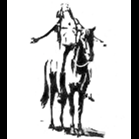Designer Clothes
-
Recently Browsing 0 members
- No registered users viewing this page.
-
Topics
-
-
Popular Contributors
-
-
Latest posts...
-
44
Crime Foreigner Buries Dog Alive in Shocking Phuket Incident
It sounds a lot like the hero of many AN posters treatment of dogs. At least he didn't take the dog's vocal cords out . https://www.factcheck.org/2021/11/answering-questions-about-beaglegate/ In a July 30 “exposé,” the White Coat Waste Project alleged that Fauci, chief medical adviser to the president and head of the National Institute of Allergy and Infectious Diseases, spent more than $424,000 on “beagle experiments” in which the dogs were “bitten to death by flies.” That was followed by an Aug. 31 blog post that carried the headline “Fauci Funded $375K Beagle Torture Overseas, Too.” Then, in an Oct. 5 report, the group added that “Fauci Wasted $1M+ to Poison Beagle Puppies, Cut Out Vocal Cords.” Maybe the fat guy was a big fan of Fauci. Let the down votes begin. -
28
Tourism Thailand Delays Tourist Entry Fee Amid Travel Concerns
For donkey times they have tried unsuccessfully... what morons are running the show... -
-
215
Should I return to the UK - difficult decision!
Hi Jim, thanks for your thoughtful post and comments. Yes, my desire to return back to the UK is primarily based on medical concerns and 'what if?' questions about my future years. I do have estranged family in the UK, who I don't expect to care for me. Being of limited financial means is a blessing, because the local authority is required to freely provide care assistants etc if needed. Although I speak fluent Thai, I'm not so sure that I can fully trust 'the system' here to provide good palliative care, morphine etc to reduce pain. As a scientist, I do know how to end my life painlessly (jump off a tall building lol). If I were to slowly 'degrade' in the UK or Thailand, then I certainly could make provision with various substances that would enable me to end things quickly and painlessly. But in any case (as previously mentioned), it seems rather difficult to actually return to the UK because of the lack of rented accommodation in nice localities. I could certainly rent in Blackpool, and from a visit a few years ago, it's not too bad a place. But I prefer the West Country. Right now, I have stopped actively searching for a rented property in the UK. I have decided to stay put one more year in south-east Asia (not necessarily in Thailand), and save up about $20,000 from my online teaching, then return to the UK with that money, which would allow me hopefully to rent a place by putting down several months of deposit. (I don't want to return to the UK without enough funds in case I have to stay in an expensive Air BnB for a few months). Anyway, plans for our latter years is something that everyone must consider. Best just to drop dead (as my dear father did at 89 years old). -
-
31
Wise asking to confirm my residential address
Experian in UK go 0-999 (my provider). Equifax 0-700, TransUnion 0-710. It is in USA where 850 is top score. We are both correct then.
-
-
Popular in The Pub


.thumb.jpeg.d2d19a66404642fd9ff62d6262fd153e.jpeg)









Recommended Posts
Create an account or sign in to comment
You need to be a member in order to leave a comment
Create an account
Sign up for a new account in our community. It's easy!
Register a new accountSign in
Already have an account? Sign in here.
Sign In Now